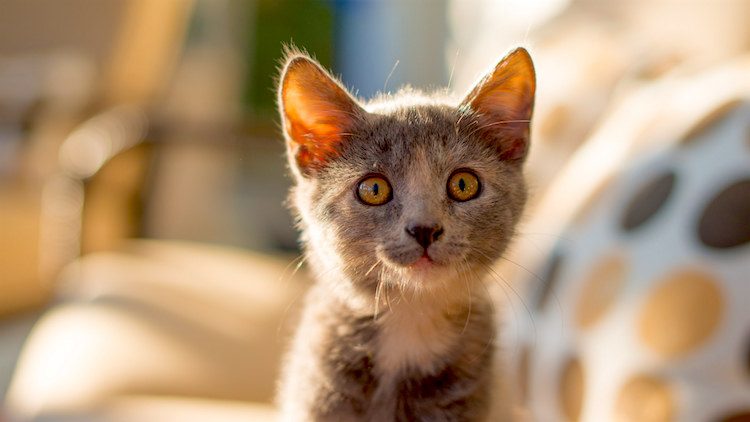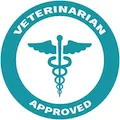If your dog or cat has a minor wound, do you head straight for the veterinarian?
This question has been on my mind recently.
I was thinking about it partly after reading a survey about people self-medicating pets and partly because of a comment left on the “Cat Fight Club” article here on Petful from Dr. Debora Lichtenberg, DVM.
A survey conducted by the UK insurance company More Than showed that:
My opinion? You should prioritize safety first. Before giving your pet medication, at least call the vet first to ensure it’s safe and check the correct dose.
Remember, human medications are made for humans, and even if the internet (“Dr. Google”) says something is safe, giving a relative overdose can be dangerous.
And that is where Dr. Lichtenberg’s excellent “Cat Fight Club” article about cat abscesses comes in.
A commenter said hydrogen peroxide should never be used on living tissue … which raises a great point: What should you use at home if your cat comes back with a fresh bite wound or your dog scratches their flank?

3 Ways to Clean Your Dog or Cat’s Minor Wounds
Cleaning a fresh wound can prevent infection, and yet there is an argument that peroxide, disinfectants and even salt water all have the potential to damage tissue and delay healing.
So what is the caring person meant to do when faced with a pet’s minor wound that needs cleaning?
Let’s come up with some practical suggestions.
First, cleaning a fresh cat bite wound reduces bacterial contamination and could make the difference between it healing uneventfully or an abscess. So, no, you don’t have to dash straight to the vet — but, yes, please bathe minor wounds when you see them.
Here are the options for safe cleaning:
1. Saline Solution
Saline is the first line of defense. From the saline you get in first aid packs to contact lens cleaning solution to a home-prepared solution, this is a good fluid to use when cleaning a wound.
The salt has mild antibacterial properties while saline, when made correctly, has the same makeup as body tissue and is gentle on vital healing cells.1
The trick with saline solution is to use a large volume and “lavage” the wound — in other words, wash, wash and wash again, preferably by squirting the salt water from a syringe onto the wound.
This not only is a mild disinfectant but also literally flushes debris and contamination away.
How to make a saline solution for your dog or cat:
- Pour out 1 cup of boiling water.
- Add 1/2 teaspoon of salt.
- Stir to dissolve and leave it to cool.
- Make a fresh solution each time you need it.
2. Disinfectant Solutions
Having a pet disinfectant in your first aid kit is a great idea. But beware — not all home disinfectants are safe for animal use.
For example, disinfectants containing phenols (such as Lysol or Dettol) are toxic to cats and should not be used. “A lot of people don’t know that Lysol or Pine-Sol can be toxic to cats, Dr. Cynthia Karsten, DVM, tells Veterinary Practice News.2
Check the packaging to make sure it isn’t a phenolic product, but you can also tell when you dilute the disinfectant — phenols go cloudy in water.
Safe disinfectants include chlorhexidine and povidone-iodine.
If it’s not already diluted, you’ll need to dilute the disinfectant to the strength indicated on the label — concentrated disinfectant not only kills bugs but also damages exposed living tissue, so get the dilution right.
Although intact skin is its own natural barrier, in the case of a wound where raw tissue is exposed, using an incorrect strength could slow healing.
Here’s what you can expect your veterinarian to do if you bring your pet in for more serious wounds:
3. Hydrogen Peroxide
Now, there’s no denying the use of hydrogen peroxide is controversial.3
The reason is the difference between killing bacteria and healthy tissue is all a matter of dilution.
The satisfying fizz of neat peroxide as it kills bacteria can also damage living tissue. But, when diluted appropriately (for every 1 part of 3% hydrogen peroxide, dilute it in 3 parts water), it makes a useful disinfectant and is considered safe on minor wounds.
Of course, be mindful about your pet’s needed level of care. Any of the following would need a veterinarians’s prompt care:
But if your pet has a minor wound, clean it up and monitor for signs of infection. Cleaning is the best thing to do, and by balancing the risks, you do more good than harm.
References
+ Click to see the sources for this article.
 This pet health content was written by a veterinarian, Dr. Pippa Elliott, BVMS, MRCVS. This article was originally published in 2016 and is regularly updated. It was last reviewed for accuracy and updated Aug. 24, 2019.
This pet health content was written by a veterinarian, Dr. Pippa Elliott, BVMS, MRCVS. This article was originally published in 2016 and is regularly updated. It was last reviewed for accuracy and updated Aug. 24, 2019.


